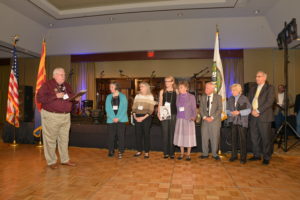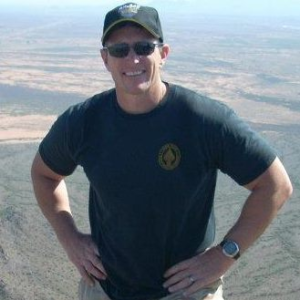Source: Arizona Game and Fish Department Press Release – January 19, 2018
Nineteen individuals and organizations were honored at the annual Arizona Game and Fish Commission Awards Banquet on Saturday, Jan. 13, at the Pointe Hilton Tapatio Cliffs Resort in Phoenix. The awards recognize Arizonans who have contributed significantly to the conservation of the state’s wildlife, its outdoor heritage, and the mission of the Arizona Game and Fish Department.
Among those honored were Gov. Doug Ducey for State Advocate of the Year (the award was accepted on behalf of the governor by Natural Resources Policy Advisor Hunter Moore); Sen. Jeff Flake for Federal Advocate of the Year; 3TV Meteorologist Kim Quintero (one of two winners of Media of the Year); and Elizabeth (Beth) Woodin, who

served on the Arizona Game and Fish Commission in the 1990’s and was president of the Arizona Heritage Alliance. Ms. Woodin sadly passed away last week and was awarded posthumously.
- Award of Excellence: Lake Havasu Marine Association
- Award of Excellence: Elizabeth Woodin
- Youth Environmentalist of the Year: Chase Godbehere
- Media of the Year: Kim Quintero
- Media of the Year: National Veterans Magazine
- Conservation Organization of the Year: Phoenix Varmint Callers, Inc.
- Conservationist of the Year: Clyde Weakley
- Natural Resource Professional of the Year: Erica Stewart
- Volunteer of the Year: Ron Adams
- Educator of the Year: Michael Eilertsen
- Mentor of the Year: Justin Stewart
- Advocate of the Year – State: Gov. Doug Ducey;
- Advocate of the Year – Federal: Sen. Jeff Flake
- Business Partner of the Year: OneAZ Credit Union
- Buck Appleby Hunter Education Instructor of the Year: John and Linda Vedo
- Wildlife Habitat Steward of the Year: Double O Ranch
- North American Model Commissioners Award: Luke Thompson
- Chairman’s Award: Yuma Valley Rod and Gun Club



 Walter W. (Bill) Meek, a 50-year resident of Arizona, is past president of the
Walter W. (Bill) Meek, a 50-year resident of Arizona, is past president of the
You must be logged in to post a comment.